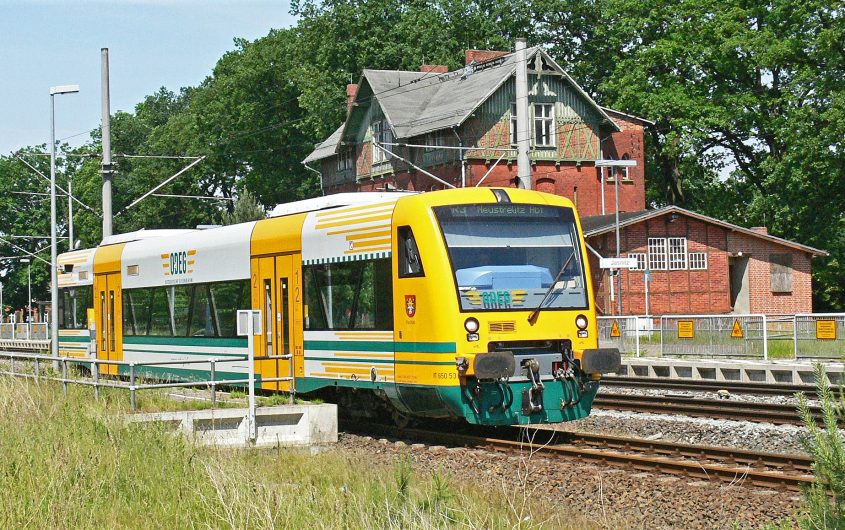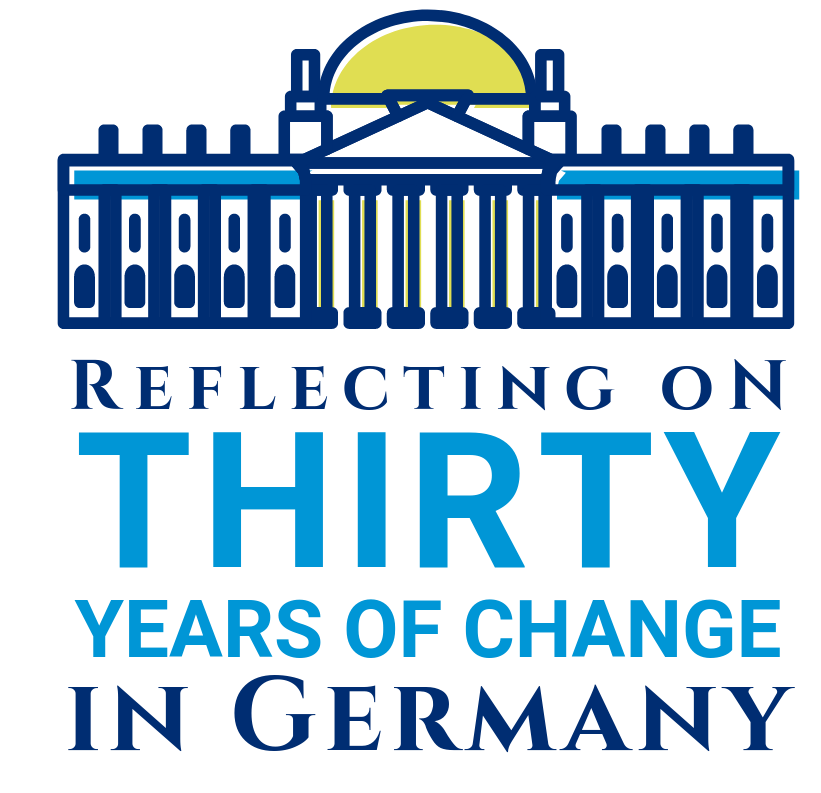
Erich Westendarp from Pixabay
Inner Unity and Regional Diversity

Helga A. Welsh
Wake Forest University
Helga A. Welsh is Professor of Politics and International Affairs at Wake Forest University. Her publications have focused on the history and politics of the former East Germany, German unification, transitional justice, the reform of higher education in Germany, and democratization processes in Central and Eastern Europe. She has published a book on denazification in the former East Germany and co-edited a book on German unification. Her most recent book (co-authored with Christiane Lemke) is Germany Today. German Politics and Policies in a Changing World (Rowman and Littlefield, 2018). Her articles have appeared in journals such as Comparative Politics, European Journal of Education, Europe-Asia Studies, German Politics, German Politics and Society, and West European Politics. She is one of the editors of “German History in Documents and Images,” a project administered by the German Historical Institute in Washington, DC. She served as co-editor of German Politics from 2014-2018.
The unification of the two German states in 1990 prompted expectations of harmonization in political culture and promises of equivalent living conditions. Almost three decades later, the revival of narratives based on East-West differences has raised concerns whether progress toward inner unity, a term coined in the 1990s to describe political and material convergence across the former East-West divide, has stagnated or fallen behind. Frustration with the process of unification, however, tends to downplay the remarkable progress in overcoming the heritage of East-West contrasts. Indeed, in most scholarly work on German politics and policy, they play a minor role. Yet, in unification accounts, East and West tend to be viewed as distinct and homogenous categories when they are anything but uniform or fixed. The overall picture is complicated. North-South differences coexist and partly overlap with East-West and within-region differences, suggesting not two but at least four if not five Germanies.
Read more on the Fall of the Berlin Wall from AGI
 In economic, social, and political terms, what used to be the German Democratic Republic (GDR) often can still be geographically defined. Nevertheless, for every persistent difference, an instance of harmonization can be found, even if its weight varies for individuals and the goal of German unity. For example, the federal government’s 2018 Annual Report on the Status of German Unity notes increasingly equal infrastructure, environmental quality, city and village landscapes, housing, and medical care between East and West along with the continued differences in wages, salaries, and economic productivity acutely felt by Eastern German citizens.
In economic, social, and political terms, what used to be the German Democratic Republic (GDR) often can still be geographically defined. Nevertheless, for every persistent difference, an instance of harmonization can be found, even if its weight varies for individuals and the goal of German unity. For example, the federal government’s 2018 Annual Report on the Status of German Unity notes increasingly equal infrastructure, environmental quality, city and village landscapes, housing, and medical care between East and West along with the continued differences in wages, salaries, and economic productivity acutely felt by Eastern German citizens.
For every persistent difference, an instance of harmonization can be found, even if its weight varies for individuals and the goal of German unity.
Shifting the perspective to subnational levels (Land and communes) highlights regional diversity. Translated into measures targeting educational performance, for example, the eastern states of Saxony and Thuringia together with the western states of Bavaria and Saarland are at the top of one national ranking, while western and eastern states share the last four positions. In 2018, the risk of poverty was highest in the western city-state of Bremen followed by the northeastern state of Mecklenburg West-Pomerania and lowest in the eastern state of Brandenburg and the western states of Baden-Württemberg and Bavaria. Overall, the risk of poverty is still slightly higher in the East, but the margin has narrowed significantly; in 2005, the difference between East and West was 20.4 to 13.2 percent, respectively; in 2018, it was 17.5 to 15 percent.
These findings illustrate substantial regional differentiation amid wider harmonization processes that are not always based on policy initiatives but are also the unintended results of social developments. For example, a narrowing of the unemployment gap between East and West is not solely due to job creation; migration and retirement played a role as well. North-South differences coexist with the East-West dichotomy, and, in some accounts, the more prosperous South includes two eastern states, Thuringia and Saxony. With regard to some indicators, the East has assimilated to Western levels, and in others, some Western communities encounter problems familiar to those in the East.
Regional diversity and inequality have increased across Germany; they are measured by composite indices to classify regions and cities according to diverse indicators. Measurements include skilled workforce, living quarters, health, safety, leisure, old age and child poverty, communal debt, income, and broadband access. While urban-rural differences are significant, some cities suffer from structural weakness, and some rural localities are booming. Many citizens living in economically dynamic cities are confronted with high cost of living expenses and inadequate access to daycare. The category “structurally weak region” still subsumes most areas in the East but also a scattering of regions in the West, including areas in Lower Saxony, North Rhine-Westphalia, Schleswig-Holstein, and Saarland.
Thus, policy challenges are not limited to the Eastern regions, even if they still occupy a special place. Communist legacies, the impact of the transformative years immediately following unification, and current developments blend to affect their current situation. Demographic change illustrates the interconnectedness of these factors well. In the western part of the country the change has been steady, but gradual and drastic in the eastern states. Long-term trends matter: compared to 1905, the population in the West has more than doubled, while the East has seen no increase.
Now fewer Easterners leave for the West but rather relocate from rural areas to the cities, deepening the existing urban-rural divide.
Leaving aside the exodus from the former GDR prior to the building of the Berlin Wall in 1961, the first two decades after unification stand out. From 1988 to 2013 alone, the Eastern Länder lost slightly more than 17 percent or approximately 2.8 million people due to migration and as a result of fertility/mortality ratios. Now fewer Easterners leave for the West but rather relocate from rural areas to the cities, deepening the existing urban-rural divide. The proportion of citizens aged 65 and older is high across Germany (21.4 percent in 2017; 15.8 percent in 1997) but many eastern regions lead the way. Differences in the number of people with migration background are also pronounced; most live in the western part of the country but regional differences are significant here as well. On the flip side, fertility rates which had dropped significantly in the East after unification are now slightly above the western level, and differences in life expectancy have almost completely disappeared.
Relying predominantly on East-West contrasts to assess the status of German unity is misleading and has become counterproductive.
Relying predominantly on East-West contrasts to assess the status of German unity, I argue, is misleading and has become counterproductive. In the years immediately following unification, it mandated much-needed special funds and programs. Now, it downplays progress in harmonization while prolonging and reinforcing perceptions of differences rather than commonalities. Critics of this argument state that as long as the East is not like the West, the promise of unification remains unfulfilled. Neglecting to point out the differences would leave the Eastern states in perpetual dependence on the West and its residents as second-class citizens. Others ask whether a promise of harmonization not matched by reality will deepen disappointments and estrangement between the East and West. Surrendering East-West dichotomies to a less prominent place in the discourse does not mean accepting the status quo. Rather, it acknowledges that today’s political challenges have important regional variations across the federation. In this understanding inner unity recognizes and accepts differences and calls for innovative problem solving with potential learning processes and spillover effects across the nation.
This article is based on, and excerpted from, a forthcoming article in German Politics and Society on the same topic.










